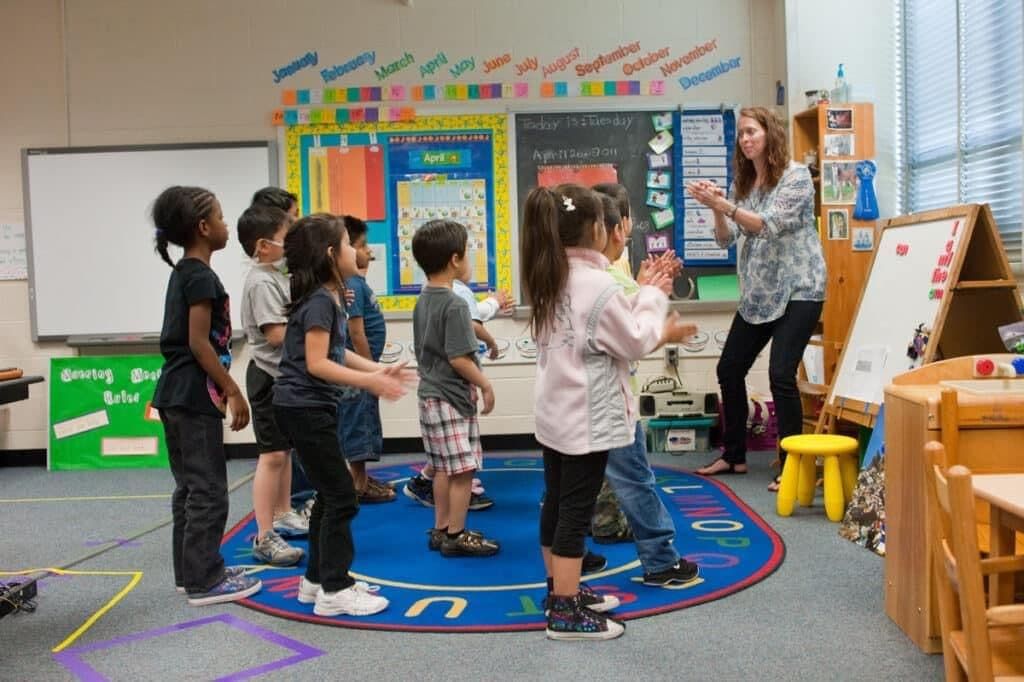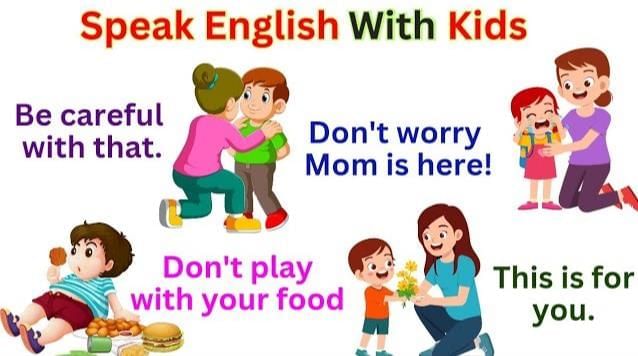How to Prepare English for UKG? | English for UKG PDF Download
1. Purpose of English in UKG
The aim is to build listening, speaking, reading, and writing foundations through phonics, vocabulary, grammar, and expression. The focus is on confidence and enjoyment, not rote memorisation.
2. Core Principles of Teaching
Phonics-based learning – Letter sounds before spellings.
Story & rhyme-rich – Language through rhythm and context.
Speaking first, writing later – Oral confidence leads to written skills.
Multi-sensory approach – Songs, actions, visuals, tracing.
Short, repeated sessions – 10–15 mins per activity, revisited.

3. Progression of Topics & How to Teach Them
Step 1 – Alphabet & Sounds
Letters (Aa–Zz) – Recognise, say, and write both capital & small.
Sound of Letters – Phonics sounds, beginning/ending sounds.
Vowels and Consonants – Identify 5 vowels, 21 consonants.
Vowel Words – Short vowel words (cat, pin, dog, sun, bed).
Identification Activities – Matching letters, spotting words, sound hunts.
Step 2 – Early Grammar & Word Use
Pronouns – I, he, she, it, we, they.
Articles (A/An) – A cat, An apple.
One–Many – Boy → Boys, Cat → Cats.
This-That & These-Those – Use with objects nearby/far.
Use of Has/Have – She has a doll / They have toys.
Positions – Prepositions: in, on, under, behind.
Step 3 – Word Forms & Usage
Add –ing Words – run → running, play → playing.
Use of –ed Words – walk → walked, jump → jumped.
Opposites – hot/cold, big/small.
Rhyming Words – cat/hat, pen/ten, sun/fun.
New Words and Spellings – Weekly practice lists.
Step 4 – Reading & Writing Skills
Word Reading – Blend phonics sounds into words.
Sentence Formation – Use sight words (I am a boy. This is a cat.).
Copy & Write – Simple words, short sentences.
Spelling Practice – Through games (dictation, missing letters).
Step 5 – Expression & Creativity
Rhymes and Stories – Recite poems, listen & retell stories.
Picture Talk – Describe what is seen in images.
Role Play – Shopkeeper, doctor, family roles.
Story Sequencing – Arrange 3–4 images in order.
4. Tools & Activities
Flashcards – letters, words, rhyming pairs.
Storybooks & Picture Readers – Simple, repetitive text.
Worksheets – Tracing, matching, fill-in-the-blanks.
Games – Word bingo, “I spy a word,” rhyming games.
Songs & Rhymes – Alphabet song, action poems.
5. Making Learning Stick
Daily phonics practice (5–10 mins).
Introduce weekly sight words.
Use real-life conversation: “This is my toy,” “I have an apple.”
Celebrate effort through praise & encouragement.

6. Assessment (Through Observation)
Check if the child can:
Identify and write A–Z with sounds.
Read and spell short vowel words.
Use simple pronouns, articles, and plurals.
Form sentences with this/that/these/those.
Recognise opposites, rhyming words.
Retell a short rhyme or story.
|
43 videos|115 docs|5 tests
|
FAQs on How to Prepare English for UKG? - English for UKG
| 1. What is the purpose of teaching English in UKG? |  |
| 2. What are the core principles of teaching English in UKG? |  |
| 3. How should topics be progressed and taught in UKG English classes? |  |
| 4. What tools and activities can be used to teach English in UKG? |  |
| 5. How can learning be made stick in UKG English education? |  |















